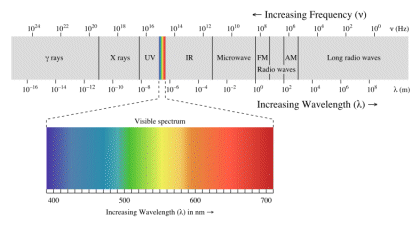How to distinguish healthy from bleached coral
What reflectance tells us
In the grand scheme of things, reflectance is an important tool in coral reef remote monitoring via aircraft or satellite. Remote sensing is the subject of much research as it can identify coral bleaching and perhaps coral health, as well as discriminate between coral, algal and other surfaces.
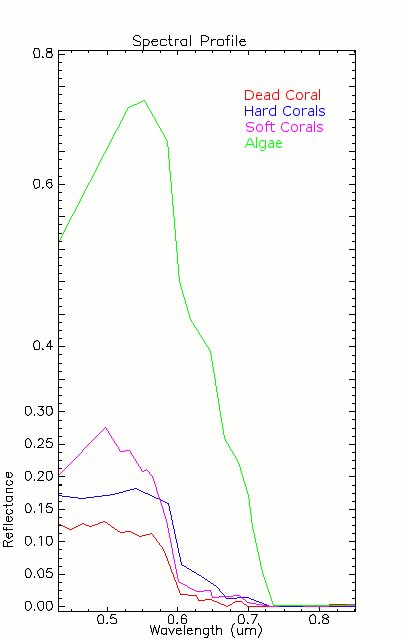
Coral reflectance in Tanimbar (Indonesia).
Source: VITO.
Spectral signatures
As can be seen in the graph, the reflectance of corals is mainly perceptible in the visible light spectrum (400 to 700 nm). But the amount of reflectance tells us whether we are dealing with dead corals, hard corals, soft corals or algae.
In other words, each surface can be characterized by its own spectral signature.
Have a look at the electromagnetic spectrum
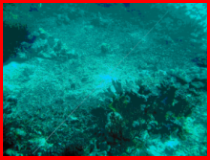
Dead coral. Source: VITO.
|
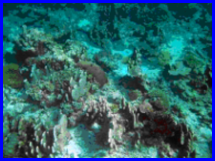
Hard coral. Source: VITO.
|

Soft coral. Source: VITO.
|
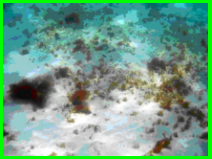
Algae. Source: VITO.
|
Try to answer to following questions with the help of the graph:
- Which colours of the visible light spectrum are reflected the most by hard and soft corals?
- In which part of the spectrum do algae have the biggest reflection?
- What do you think is the reason for this?
